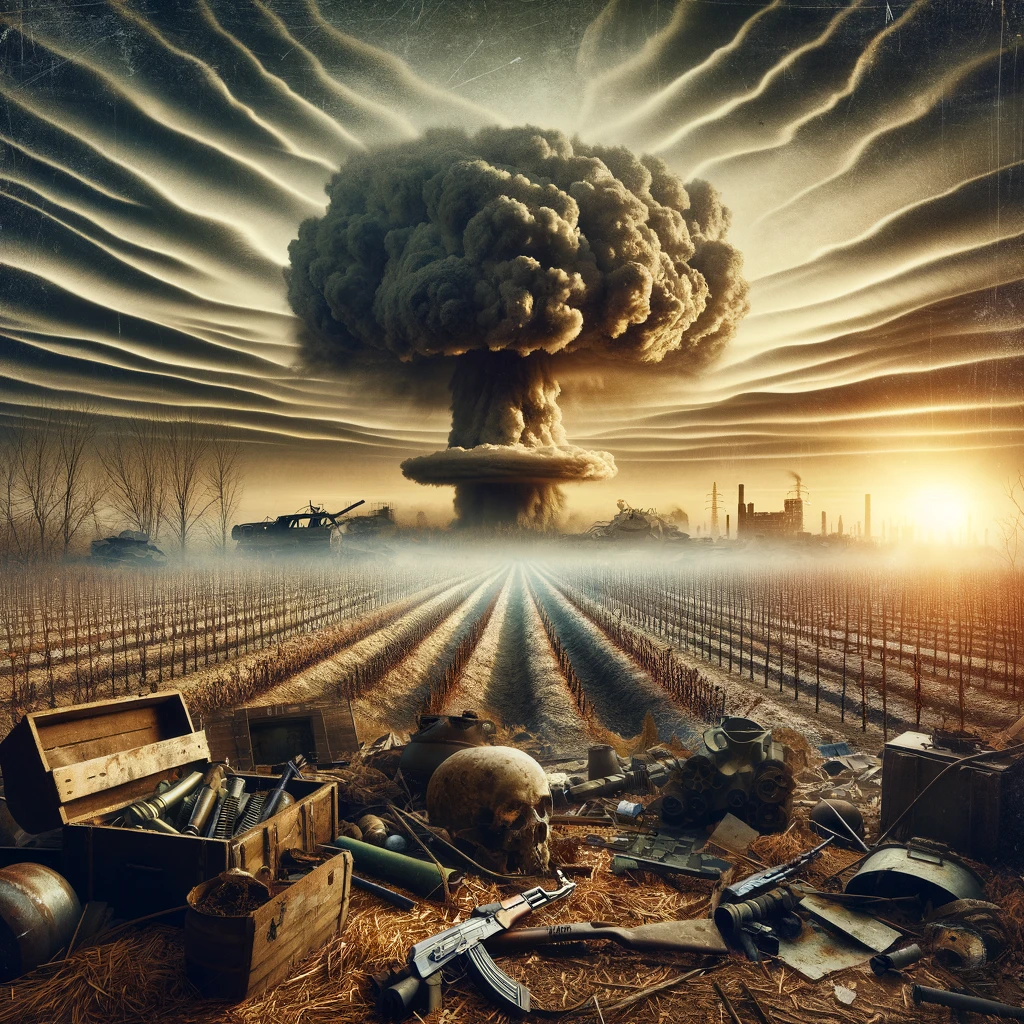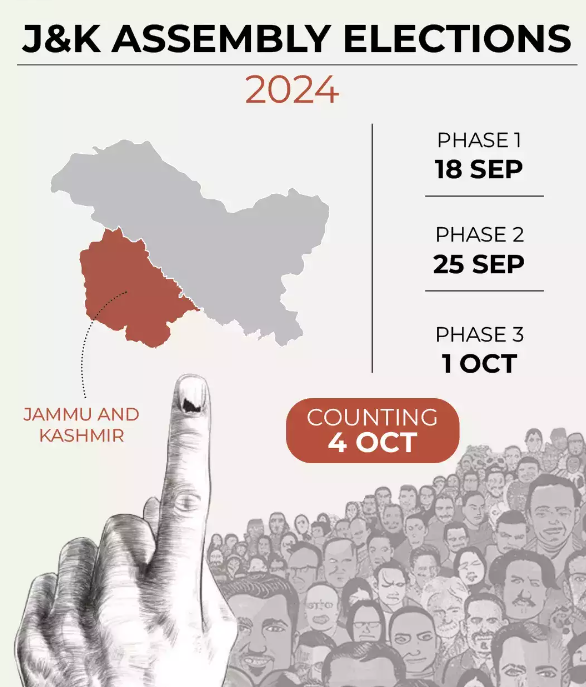Picture this — in the shadow of nuclear war, the world teeters on the brink of an irreversible divide—life before and the aftermath. This envisioned scenario unfurls the catastrophic tapestry of nuclear conflict, from the initial devastation wrought by firestorms to the chilling dawn of a nuclear winter and the subsequent brink of civilisation’s collapse. This essay, I hope conveys the grim reality of what the world could look like if something like that happened.
The thought of nuclear war conjures images of mushroom clouds and utter destruction. While the immediate consequences are undeniably horrific, the true scope of devastation extends far beyond the initial blasts. This article delves into the chilling reality of a post-nuclear war world, exploring the immediate aftermath, the looming threat of nuclear winter, and the potential for human resilience and recovery in the face of an unimaginable catastrophe.
1) The Immediate Aftermath of a Nuclear War
A single nuclear detonation unleashes a maelstrom of destruction, unlike anything humanity has ever witnessed. The initial blast, with temperatures exceeding that of the sun, vaporizes everything within kilometres of the ground zero. A powerful shockwave follows, crushing buildings and reducing entire cities to rubble. Those not caught in the immediate blast face a horrifying reality:
Thermal burns: The intense heat radiates outward, causing widespread thermal burns on exposed skin, even miles away from the detonation point.
Blast injuries: The powerful shockwave carries immense pressure, inflicting severe internal injuries, ruptured eardrums, and even death upon those caught in its path.
Radiation sickness: The detonation releases a deadly cocktail of radiation, causing acute radiation sickness in individuals exposed within the blast radius. Symptoms can range from nausea and vomiting to hair loss, internal bleeding, and ultimately, death.
Beyond the immediate casualties, the long-term effects of nuclear war cast a dark shadow over the surviving population.
Nuclear fallout: Radioactivity from the blast doesn’t disappear after the initial explosion. Radioactive particles carried by dust and debris contaminate surrounding areas, posing a serious threat to human health for years to come.
Firestorms: The intense heat from the blast can ignite surrounding structures, triggering massive firestorms. These infernos can rage for days, consuming entire cities and spewing vast amounts of smoke and soot into the atmosphere. In a large-scale war, multiple firestorms could erupt, blanketing vast swaths of the planet in a choking veil.
2) Nuclear Winter: A World in Perpetual Twilight
The smoke and soot from firestorms don’t simply dissipate. They ascend into the stratosphere, where they can linger for years, blocking sunlight and triggering a phenomenon known as nuclear winter. This prolonged period of global cooling would have catastrophic consequences.
The concept of nuclear winter is based on computer simulations that predict the consequences of large-scale nuclear war. These simulations suggest that the smoke and soot from firestorms would absorb sunlight, preventing it from reaching the Earth’s surface. This would disrupt global weather patterns, leading to:
Decreased global temperatures: The average global temperature could drop by several degrees Celsius, plunging entire regions into prolonged periods of cold and darkness.
Disrupted precipitation patterns: Rainfall and snowfall patterns would be significantly altered, leading to droughts in some areas and excessive precipitation in others.
Exacerbated climate change: Nuclear winter would not only disrupt existing climate patterns but also exacerbate global warming caused by greenhouse gas emissions.
Global Consequences: A World on the Brink of Collapse
The effects of nuclear winter wouldn’t be confined to the atmosphere. They would cascade down, impacting every facet of human existence, from food production to societal stability.
3) Agriculture and Food Security:
The disruption of sunlight and precipitation patterns would have a devastating impact on agriculture.
Decreased crop yields: With less sunlight and altered temperatures, crops would struggle to grow, leading to significant reductions in global food production.
Soil degradation: The long-term effects of nuclear fallout could further degrade soil fertility, hindering future agricultural efforts.
Widespread famine: Food shortages due to reduced production and disrupted distribution networks would likely lead to widespread famine, particularly in densely populated regions.
4) Infrastructure and Essential Services:
The complex infrastructure that sustains modern societies would be severely impacted:
Power grids: Nuclear detonations could damage or destroy power grids, plunging entire regions into darkness and disrupting essential services.
Transportation networks: Roads, bridges, and communication networks could be severely damaged, hindering the movement of people and goods.
Healthcare systems: Medical facilities and resources would likely be overwhelmed by the sheer number of casualties and the long-term health effects of radiation exposure.
5) Societal Breakdown and the Erosion of Humanity:
The breakdown of essential services and infrastructure would create a chaotic and desperate environment:
Widespread lawlessness: The collapse of social order could lead to increased violence and looting as individuals struggle to survive.
Emergence of disease: Unsanitary conditions and lack of access to clean water could lead to outbreaks of infectious diseases, further adding to the devastation.
Erosion of trust and cooperation: The trauma and desperation in the aftermath could lead to a breakdown of trust and cooperation, making it difficult to rebuild society.
A Glimpse into the Future: A World Remade
The long-term consequences of a nuclear war are impossible to predict with certainty. However, one thing is clear: the world we know would be irrevocably changed.
Civilisation in question: The collapse of infrastructure, food production, and social order could potentially lead to the complete breakdown of civilization, throwing humanity back into a pre-industrial era.
Uneven recovery: The impact of nuclear war wouldn’t be evenly distributed. Some regions, particularly in the southern hemisphere, might fare better due to milder nuclear winter effects. However, these regions would likely face immense challenges in assisting a devastated world.
A Call to Action: Preventing the Unthinkable
The prospect of nuclear war is not merely theoretical; it remains a real and present danger. The consequences, as outlined here, would be catastrophic and far-reaching. It is imperative that we, as a global community, work tirelessly to prevent such a scenario from ever unfolding.
This article is not meant to incite fear but to act as a stark reminder of the consequences of our actions. By understanding the full scale of the devastation, we can strengthen our resolve to pursue peace and diplomacy and ensure that the horrors of nuclear war remain a nightmare forever confined to the pages of history.
Beyond the Blog:
For in-depth exploration and understanding of the implications of nuclear conflict, alongside strategies for prevention and peacebuilding, consider the following resources:
Bulletin of the Atomic Scientists: Provides insightful analyses on global security issues, including nuclear risk, climate change, and emerging technologies, check out Bulletin.
Carnegie Endowment for International Peace – Nuclear Policy Program: Offers research and recommendations on nuclear strategy, non-proliferation, and disarmament. Explore Carnegie Nuclear Policy.
International Campaign to Abolish Nuclear Weapons (ICAN): The 2017 Nobel Peace Prize laureate, ICAN, advocates for the prohibition and elimination of nuclear weapons. Learn from ICAN
These resources serve as a foundation for understanding the complexities of nuclear deterrence, the catastrophic potential of nuclear war, and the pathways to a safer, nuclear-weapon-free world.
Also Read: Impact of cancel culture – accountability or overreach?




